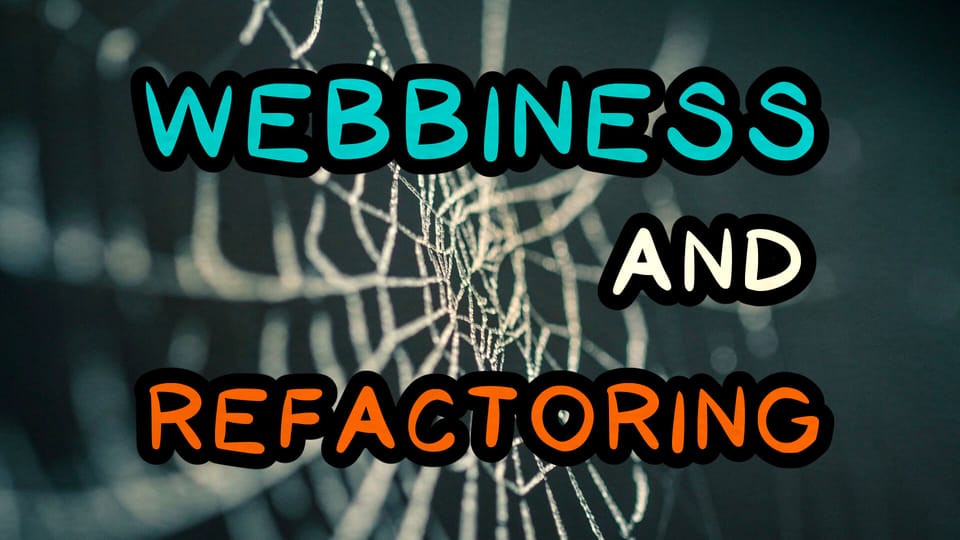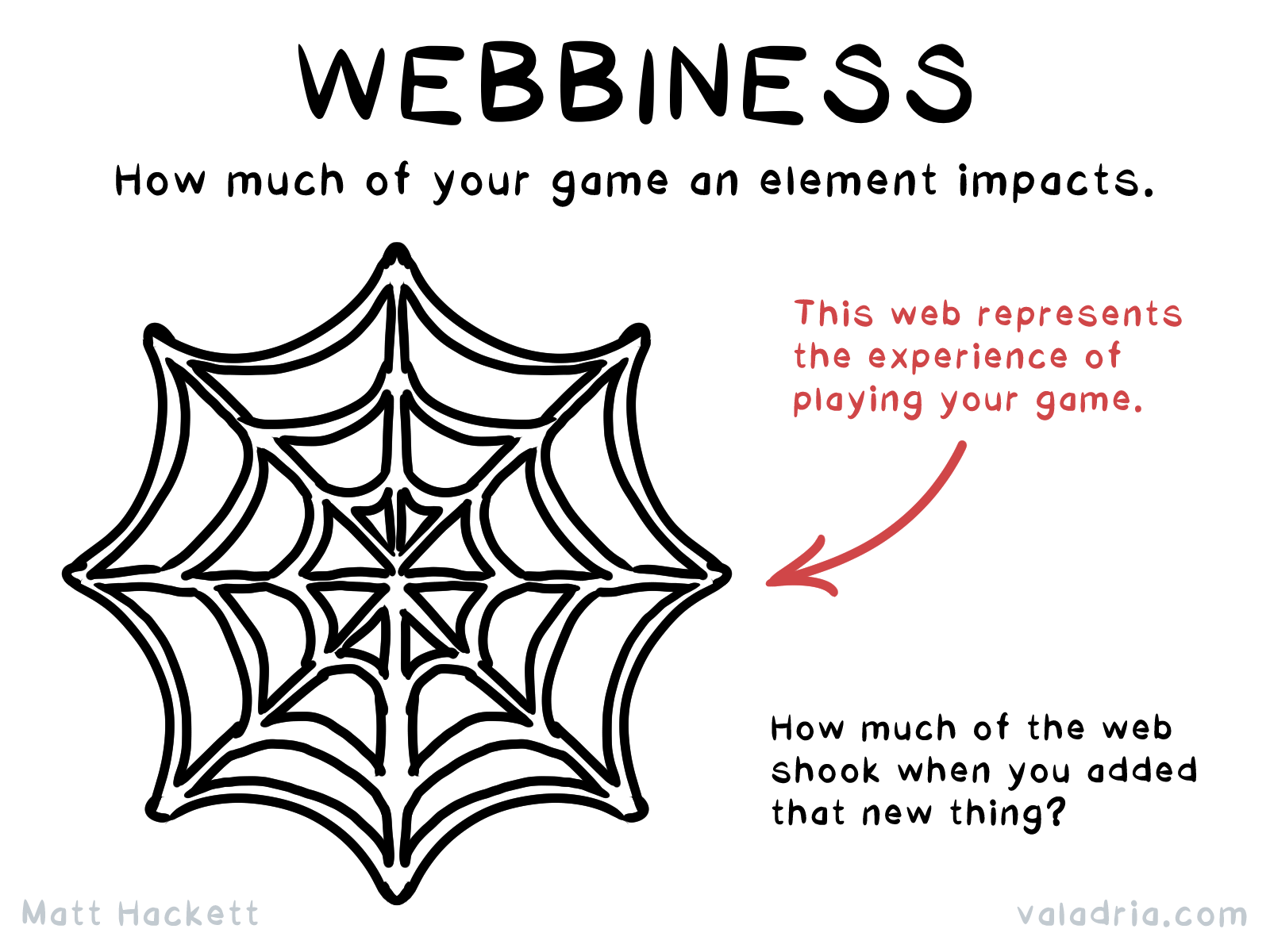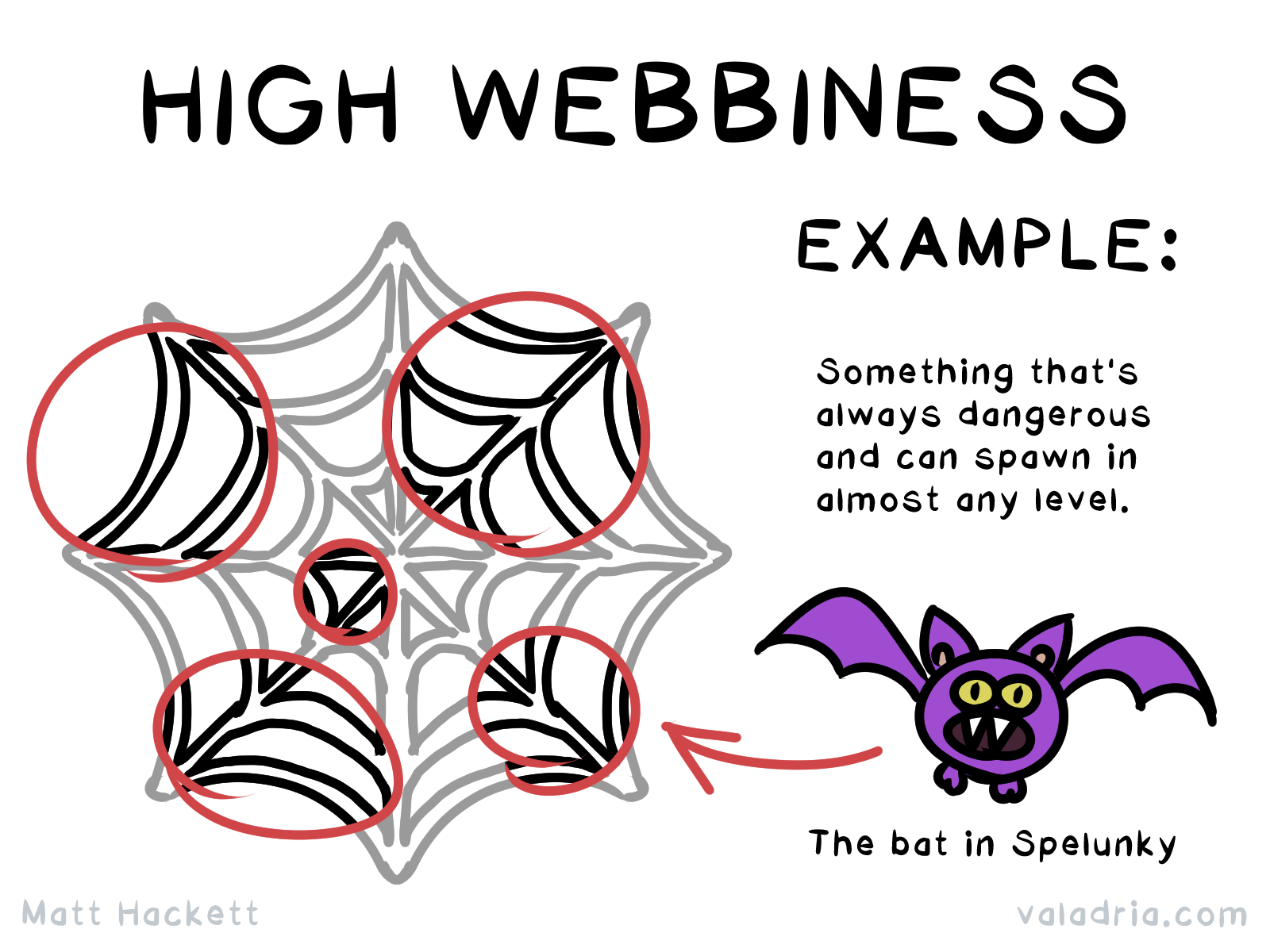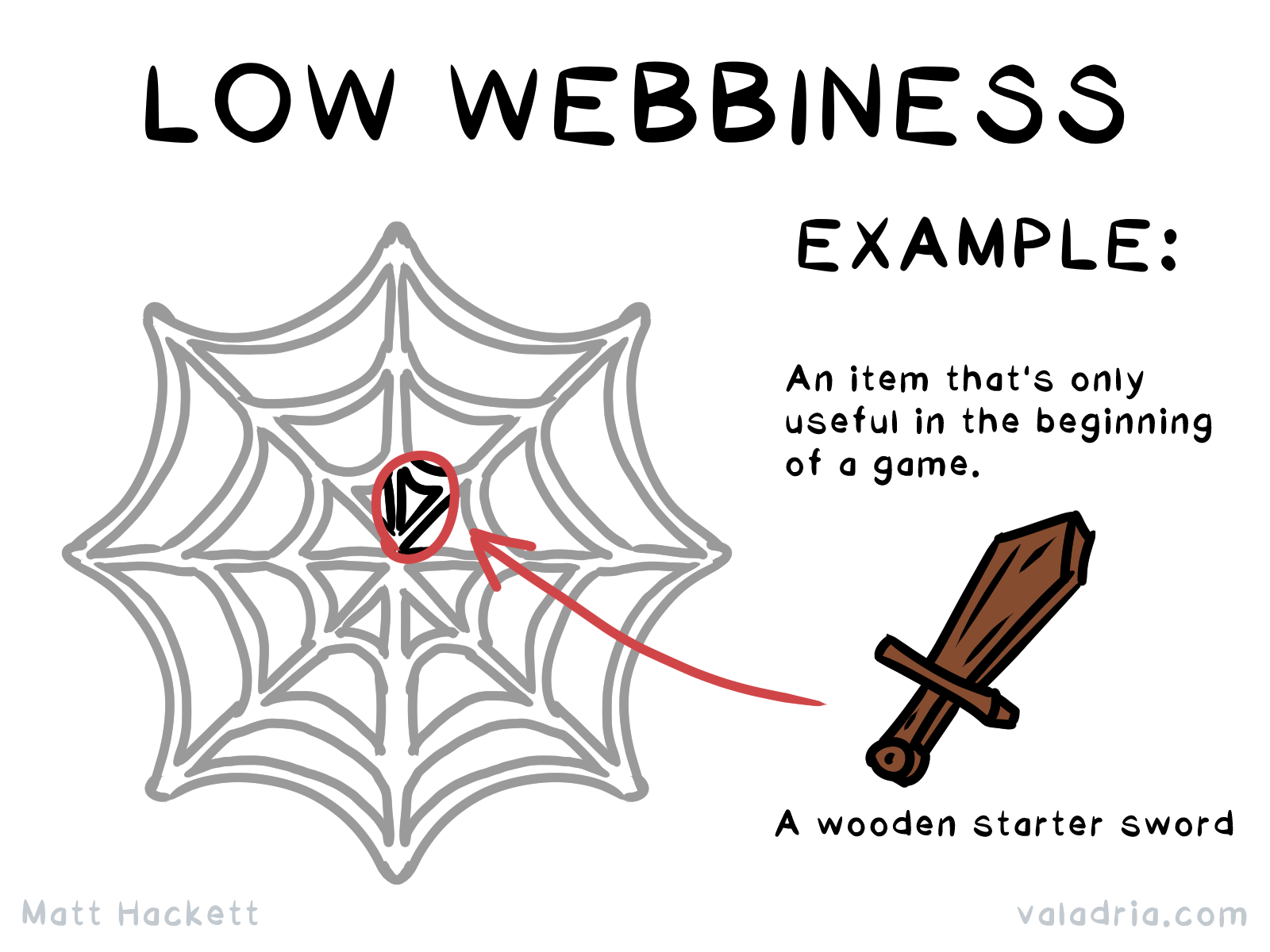🕸️ Game design for indies: Webbiness

It's podcast time! In this episode of Make the Game, I finally discuss something I've been wanting to for years:

Webbiness is a measurement that represents how much of a game is affected by a given element. Picture your game as a spider web. When you add something to the game, does the whole web shake, or just a small portion of it?
📈 High Webbiness
When an element has high webbiness, it affects a lot of the game.

Examples include:
- The bat in Spelunky – a nuisance in the very first level, and potentially any level in the entire game. It could kill you almost any time!
- A heal or cure spell in an RPG – you'll likely use it a lot in the beginning of the game, and could end up using it all the way to the end.
- The rocket launcher in DOOM – it's great when you get it, and you'll likely use it occasionally for the rest of the game.
📉 Low Webbiness
When an element has low webbiness, it affects very little of the game.

Examples include:
- The first wooden sword you are given in The Legend of Zelda – it's useful right away, but you want to upgrade it ASAP, then never use it again.
- A defensive item such as a shield that protects against something that only appears in a few places in the game (for example, protection against fire, ice, or poison).
- A secret, hidden level in an adventure game – this could reward player exploration, but never be seen in any other part of the game.
Now, not everything in a game needs high webbiness. Every game is made up of elements that have low webbiness and high webbiness, and that's OK.
As game designers, sometimes we want to introduce high webbiness elements that have big impacts on the game. Other times, we want to introduce low webbiness elements that differentiate the player's experience, giving them unique moments that separate themselves from the rest of the game.
For further details and clarity ...
🎧 Listen to the Podcast
Listen to this episode for the long-winded explanation with examples, stories, and other ramblings! You can listen in all the expected podcast places, including:

📋 Show Notes
- A Wizard's Lizard
- From Quake mods to game director with Jon Hackett
- 🐷 Pixel Washer
- PowerWash Simulator
- Dr Wahwee
- Tiled (map editor)
What do you think about webbiness? Do you have your own term for this concept?
Discuss in the very chill, very helpful Valadria Discord community.

